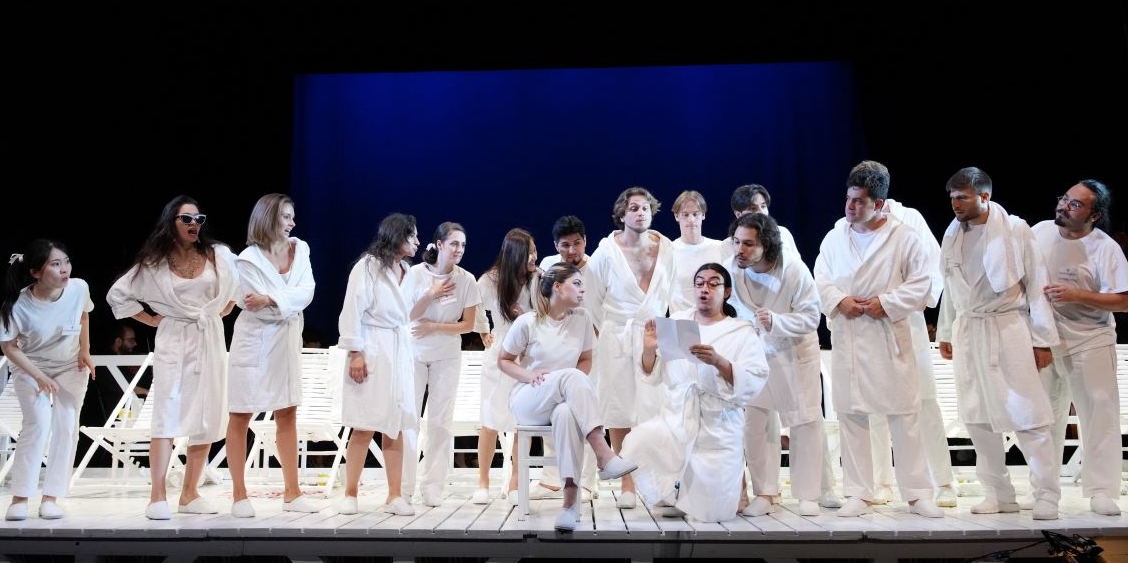Il Viaggio a Reims, Rossini’s last Italian opera (writing in French thereafter), composed for 14 solo voices, premiered in 1825, for Charles X’s coronation, to promote love, peace, and also Rossini’s French reputation! Viaggio was a showcase for 10 star singers, hence it’s difficulty, and includes rarely-heard octets, nonets and decets. It was intended to be used just once (although Rossini allowed four performances) recycling much of the music for Le Comte Ory.
Claudio Abbado revived it for the ROF in Pesaro, Rossini’s birthplace, in 1984, after over 100 years since the first performance, using 10 singers – three prima donna sopranos, a contralto, two tenors, two baritones and two basses plus secondary roles. Every August, the Festival stages Viaggio as a summer showcase for the next generation of bel canto singers in Pesaro.
There were two performances this year, with different casts, so each singer had their chance to shine. I have always hated the expression ‘when the fat lady sings’, and as the next generation of singers, they are virtually all so slim, and the same can be said for main festival artists that that expression can soon be binned.
The action takes place in a clinic with many individuals wanting to go to Reims for the King’s coronation. The set is simple – white chairs in front of the orchestra, white bathrobes for the clientele, white T-shirts and trousers for the staff, and black tie for Act II. This shows that you do not need to spend much money for an effective production.
As these are all students at various stages of development, it is not fair to single out all the voices.
In this publication https://myrtlebeachsc.com/how-does-the-choice-of-online-blackjack-strategy-affect-the-amount-of-winnings-in-the-long-term you will find information about the different progressive jackpot games on Fair Go. Learn their working principles, possible winnings and tense moments. Can’t resist? Read on and find out more!
However, I have a few comments:
Italian tenor Pietro Adaini as Liebsenskof (in both casts) is a former alumnus, who left six years ago and is already establishing his career, which is why he is ahead of the others in their development. Not far behind is Martina Russomano as Corinna, who is at the Accadémie de Paris.
I think more comedy should be drawn out of Folleville’s hat recovery scene.
Ruggiero Raimondo set the bar very high for Profondo’s ‘Medaglie incomparabili’ aria where he sings Italian in six different accents and this is a great comedy opportunity. Giuseppe Toia did a better job than his counterpart. Every Profondo should really work to perfect this as it is a chance to shine, and a great recital encore.
I strongly feel that all the students need to learn the basics of the waltz. A waltz is 1-2-3, not a 1-2 awkward shuffle. They will need to learn to dance for future careers.
Students must learn how to stand – some are pigeon toed, which is not a good look.
At the end, a boy wearing a crown, shorts and T-shirt with balloons, enters from the audience, and sits on stage taking selfies. It makes no sense, but is apparently a leftover from children’s performances: I think this should be dropped. Charles X was 66 when he was crowned.
I think the cast on 18th is stronger, but both performances are available on Operavison (18th) and YouTube (16th), and it is worth seeing for hearing the great music and the future generation of singers.

